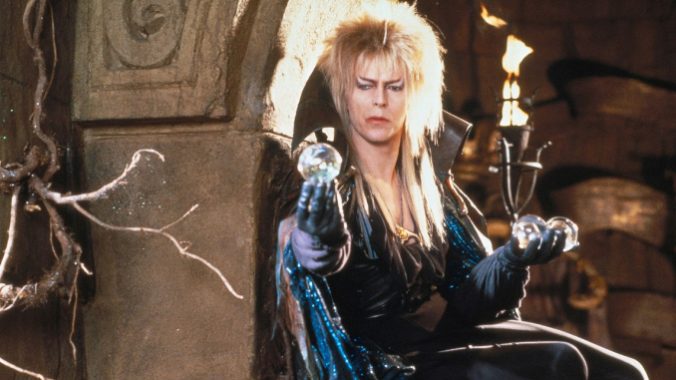The Future of The Jim Henson Company Has The Dark Crystal and Labyrinth in Its DNA
Photo via The Jim Henson Company
For the Gen X kids who grew up learning their numbers and letters from the Muppets on Sesame Street, or shaped their senses of humor around Kermit and company in The Muppet Show, it’s still hard to process that Jim Henson left this world 34 years ago.
Henson passed away suddenly from a bacterial infection in 1990, and left behind a planet full of shell-shocked kids and parents who looked to Henson’s creations for wells of laughter, shining examples of pure compassion and infinite sources of visual wonder. And many forget that it was only in 1979 that Henson and his collaborators made their first foray into theatrical projects with The Muppet Movie. In the span of just 11 years, Jim Henson would forever change the medium and ambition of modern puppetry on the big screen through his directing of The Great Muppet Caper (1981), The Dark Crystal (1982), Labyrinth (1986), while developing new techniques and innovations for the television series Fraggle Rock, The Storyteller and The Jim Henson Hour.
Thankfully, Henson’s vision was carried on by his five children, who have kept his innovative spirit and creativity alive through The Jim Henson Company. Today, Lisa Henson serves as the CEO, while Brian Henson is the Chairman and an active director behind puppetry-forward projects like The Happytime Murders and the talk show Earth to Ned. They both keep their offices at The Jim Henson Studios in Los Angeles, which is chock full of delightful ephemera, books, art and collectibles that honor every era of their family’s creations over the last six decades.
Their most recent celebration is for their collaboration with Shout! Studios to upgrade some of the Henson library to digital 4K, the most recent being a digital bundle on select platforms for The Dark Crystal and Labyrinth. Today, the two films directed by Jim Henson are considered unmitigated classics. However, when they were first released in the ‘80s, both were received by audiences as dark, experimental fantasy titles. While they purely reflected Jim’s ambitions for puppetry, they were simply ahead of their time. It was only via home video releases and cable airings that the populace finally caught up.
However, even the most ardent appreciators of The Dark Crystal and Labyrinth may not understand that both films remain foundationary in shaping where cinematic puppetry is today. The Jim Henson Company and Jim Henson’s Creature Shops around the world remain at the forefront of technological advances in puppetry, pushing the art form forward through their own creative endeavors, and in helping realize the vision of creators like Guillermo del Toro and Mark Gustafson for their Oscar-winning, stop-motion Pinocchio or Emma Tammi’s animatronic monsters in her live-action adaptation of Five Nights at Freddy’s.
Present for the making of both films, Lisa and Brian welcomed Paste and some other outlets into their personal offices to discuss the innovations that helped make The Dark Crystal and Labyrinth timeless masterworks, and to reiterate how their creative DNA remains firmly rooted in what they’re still making today.
The Dark Crystal
Paste Magazine: Today, The Dark Crystal is a crown jewel of The Jim Henson company. But it took a circuitous route to reach that general consensus.
Lisa Henson: When The Dark Crystal was first released, people were a little bit confused by it. Jim Henson and the Muppet puppeteers had only been doing Sesame Street and The Muppet Show. They’d been doing many other things, but what the audience knew about was only Sesame Street and The Muppet Show. So the movie was greeted with some confusion, particularly by the critics. But it did actually do fairly well. The funny thing is, some people think The Dark Crystal was a big commercial failure. Actually, Labyrinth was a commercial failure. The Dark Crystal did okay. And it did well enough for George Lucas to help Jim raise the money to do Labyrinth. So it wasn’t so much that it didn’t perform, it’s just that it created a lot of confusion in the minds of the audience. Like, why is Jim Henson trying to scare children? [Laughs.]
In terms of technical innovation, every Henson project was building off of what came before. Was there something that was instituted during the making of The Dark Crystal that took the company’s craft to the next level?
When The Dark Crystal was first conceived, they put together a sort of think tank workshop to make creatures—they were calling them creatures instead of puppets. They were using much more naturalistic textures, trying to come up with ways where the puppets would perhaps look more real on camera. They would also take these creatures outside and shoot them outdoors to see how they looked in nature.
-

-

-

-

-

-

-

-

-

-

-

-

-

-

-

-

-

-

-

-

-

-

-

-

-

-

-

-

-

-

-

-

-

-

-

-

-

-

-

-








































